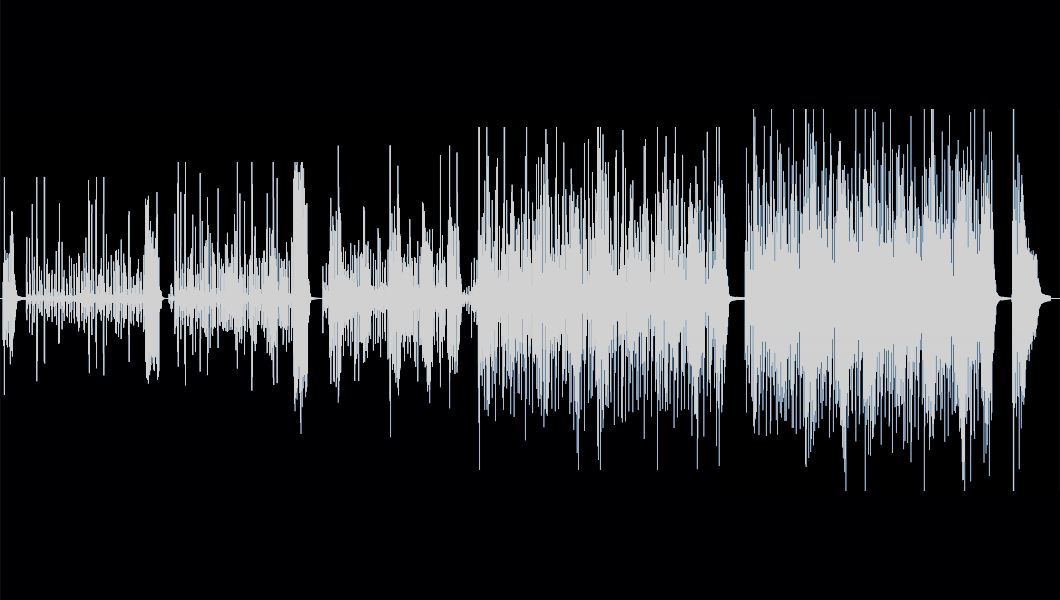In production, the ideal song structure looks like a mountain range with emotional peaks, valleys, edit points and builds.
Working in production music, there are three things I’ve come to learn about editors:
- Like me, they almost always need a fresh pot of coffee or can of Red Bull;
- Like all of us in post-production, they can be sun-starved cave dwellers; and
- Their quest to find the perfect music is often the most time-consuming part of any given job.

As if the time editors spend navigating and narrowing choices isn’t bad enough, the music they choose also has to fit the particular edit, syncing with the action onscreen in a way that’s not forced or disruptive.
It’s a challenge I recognized early on in my career, and – caffeine and sunlight aside – I’ve dedicated my work to making production music search easier, not only in the way editors narrow down and find potential tracks, but also in the very structure of the music they use for their projects. A track’s structure, after all, can make the difference between a smooth, effective edit session and an exhausting, choppy all-nighter.
Long before launching ALIBI Music, as I was cutting my teeth on music searches, I digested the feedback from the editors, music supervisors and producers I assisted. More than half of all requests clearly stated they needed music to build and evolve, music that could more effortlessly facilitate their cuts. I discovered, over time, that the most useful tracks shared a particular anatomy.
Ideally, production music tracks are like mountain ranges structured with emotional peaks and valleys, natural resting points and numerous options where the journey can end.

And isn’t that what storytelling looks like? If you picture the classic, three-act story structure of setup, confrontation and resolution translated as an audio wave, you’d see an arc. Add in numerous build options and edit points, and you’ll see a mountain range. Whether cutting a program or a promo, feature film or trailer, videogame or commercial, that mountain range sets you up for highs and lows, breaks in the action, climax and conclusion (some far more dramatic than others, of course).
Or, when you just need a groove to sit behind dialogue, it’s there too in the middle of the track, allowing you to add a bit of one of the builds at the very end to bring the scene to a close. The key is structuring music with versatility and emotion, designed with the unique needs of editors in mind… or, as we say it, “music to back up your story.”
The Anatomy of ALIBI Tracks
How does that work? Keeping in mind that the production music used for most projects amounts to less than one minute per track, ALIBI’s tracks are typically between 2-3 minutes long, which gives editors multiple options. The song structure of these tracks (which I’ll highlight below) allows editors to choose the parts that work best in conveying the emotions they’re cutting to in their story arcs. And with [stems] and [alt mixes] on top of this, they can basically score wide sections of a program with different emotions without needing to search and find individual tracks that each only serve one purpose.
The anatomy of an ALIBI track includes six key features that make work easier for editors:
- Minimal Intros – Ideally, a production music track should always start minimally with setup options that leave room to build the story and/or increase the emotion.
* Pro-Tip: In a list of ALIBI search results, you can jump to and preview the meat of any one track by simply clicking anywhere in its waveform. - Multiple Builds – After a minimal start, the track should then build as well as have multiple options to use as beds/underscore within the track and then to a very large build at the end.
- Edit Points Between Sections – For full versatility of use, each track should include plenty of edit points and natural pauses so editors can clearly see where the track is going and either easily stop or cut them out.
- A Large End Build – This is where you’ll score a story’s peak or climax, and although such a build is not always needed in production music, every track should at least include the option.
- Alternate Endings – Each track should also include multiple random bumps, hits and pieces at the end so that editors can easily find and grab ending choices to splice into a track wherever they need.
- A Range of Emotion – While the tracks aren’t telling the story, they are certainly backing it up, and like all good stories, they should feature a range of emotion that keep viewers invested in the outcome.
And, other than the edit points, this is what makes a great piece of music anyway. Most songs that last the test of time have changes, builds and ranges of emotional peaks and valleys.
In the end, it’s about how we use music to tell – or help tell -- the story. The perfect track should make the editing process intuitive, painless and efficient… hopefully saving the editor enough time to escape the cave and enjoy a rare bit of sunshine in between gigs. ;)





